Spring training preview: National League Central
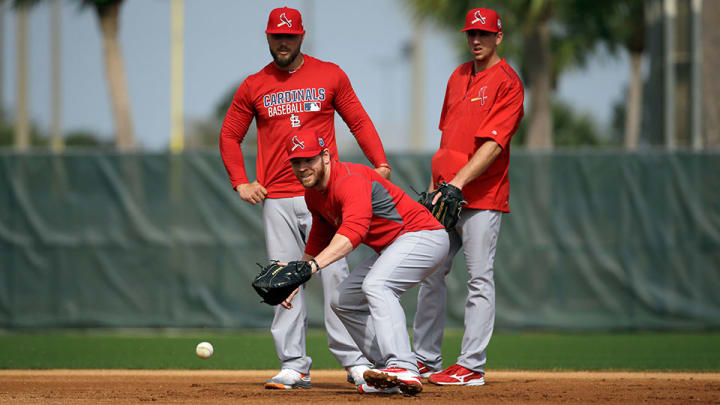
This week from Monday through Wednesday, SI.com baseball experts Cliff Corcoran and Jay Jaffe will break down what to watch for in each team's camp as part of our spring training preview by looking at the Big Change, Big Question and Big Prospect for all 30 clubs. Teams are listed by their order of finish from 2015. Note: The Big Prospect is a player who will be in big-league camp this spring but has not yet debuted in the major leagues. Today's preview: the National League Central.
Spring training previews: AL East | NL East | AL Central
St. Louis Cardinals
The Big Change: The importance of Randal Grichuk, Stephen Piscotty and Tommy Pham
Last year, outfielders Grichuk, Piscotty and Pham combined to hit .283/.343/.515 with 29 home runs in 779 plate appearances for the Cardinals. That was a crucial contribution to the team’s division-winning effort, but it was an unexpected one. Grichuk, Piscotty and Pham, the latter two of whom had combined for all of two major league plate appearances before 2015, got far more playing time than expected due to injuries to leftfielder Matt Holliday, centerfielder Jon Jay, and, to a lesser degree, first baseman Matt Adams. This year, however, Jay and Peter Bourjos are gone, as is rightfielder Jason Heyward, the only Cardinal to start more than 81 games in the outfield last season. Their replacements will be Grichuk, who will start in center; Piscotty, who will start in right; and Pham, who will serve as a fourth outfielder, backing up Grichuk and serving as a potential righthanded platoon partner for Adams (with Piscotty taking over first base against lefties).
Expectations are high for the trio—both because of the players they are replacing (particularly Heyward) and because of their own strong showings last year—but not unreasonably so. Piscotty, 25, was a top-100 prospect ranked as high as 32nd in the game by Baseball Prospectus before last season, and he hit .272/.366/.475 in 372 plate appearances in Triple A last year before making his major league debut after the All-Star Break. Grichuk, 24, hit .279/.321/.497 in parts of six minor-league seasons, including 25 home runs in just 108 games in Triple A in 2014, his only exposure at that level. Pham, who will turn 28 in early March, is not a prospect, but he is certainly qualified for the fourth outfielder role: He hit .315/.382/.474 in 699 plate appearances in Triple A over the last three seasons, notched 31 steals in 34 attempts and hit .327/.430/.505 in 121 plate appearances against lefties between Triple A and the majors last year.
The catch for the Cardinals and their outfield trio is that there isn’t another group of young players behind them if they do struggle. Grichuk, Piscotty and Pham are the front line now.
The Big Question: Will Yadier Molina be ready for Opening Day?
Molina arrived at camp last week with a splint on his left thumb, the last stage of protection for a torn ligament suffered last September and that required a pair of off-season surgeries, one in October and one in December. Molina hopes to be able to catch as early as next week and to be ready for Opening Day, but there’s no guarantee that he will, and he will certainly be behind the rest of the Cardinals' hitters in camp.
The 30: Ranking every MLB team for 2016 as spring training begins
Even if Molina does recover in time, it's worth wondering what effect the surgery will have on his already declining offense. Molina suffered a similar injury to his right thumb during the 2014 season and hit just .262/.298/.311 in 132 regular-season and postseason plate appearances after returning from that surgery. Last year, he hit .270/.310/.350 (80 OPS+) in 530 PA, his worst showing at the plate since 2006. Molina has seen his OPS+ fall in each of the last three seasons and will turn 34 this July, and with his other hand weakened, it seems highly unlikely that, even if he does make the Opening Day lineup, he’ll ever again be an impact hitter for the Cardinals.
The Cardinals appear to be aware of this, upgrading their backup catcher from Tony Cruz (career OPS+: 58) to switch-hitting veteran Brayan Peña (OPS+ last three years: 84). Molina is still valuable as a receiver, of course, but just how often he’ll be able to start behind the plate will depend in part on how his thumb heals this spring. Molina’s focus shouldn’t be on Opening Day, but on recovering full strength in his crucial left hand, regardless of what time frame that requires.
The Big Prospect: Luke Weaver, SP
The Cardinals' top prospect, by far, is 21-year-old righty Alex Reyes (Baseball America: 7; Baseball Prospects: 10; MLB.com: 13), but he incurred a 50-game suspension over the off-season after testing positive for marijuana, his second positive test for a drug of abuse. As a result, he is not among the team’s non-roster invitees to camp despite reaching Double A last year.
To find a Cardinals prospect who has not appeared in the majors but will be in camp this spring, you have to go down to the fourth spot on BA’s club rankings (seventh per BP) where you find Weaver, a skinny 22-year-old righty (no relation to major leaguer Jered or his retired brother Jeff). Drafted with the No. 27 pick in 2014 out of Florida State, Weaver excelled in high A ball in his first full season last year (1.62 ERA, 4.63 strikeout-per-nine rate in 19 starts), but he looks more like a refined command-and-control college arm than an elite prospect. He can get his fastball into the mid-90s and his changeup is excellent, but he’ll have to show an improved third pitch to have more than a back-of-the-rotation projection.
The SI Extra Newsletter Get the best of Sports Illustrated delivered right to your inbox
Subscribe
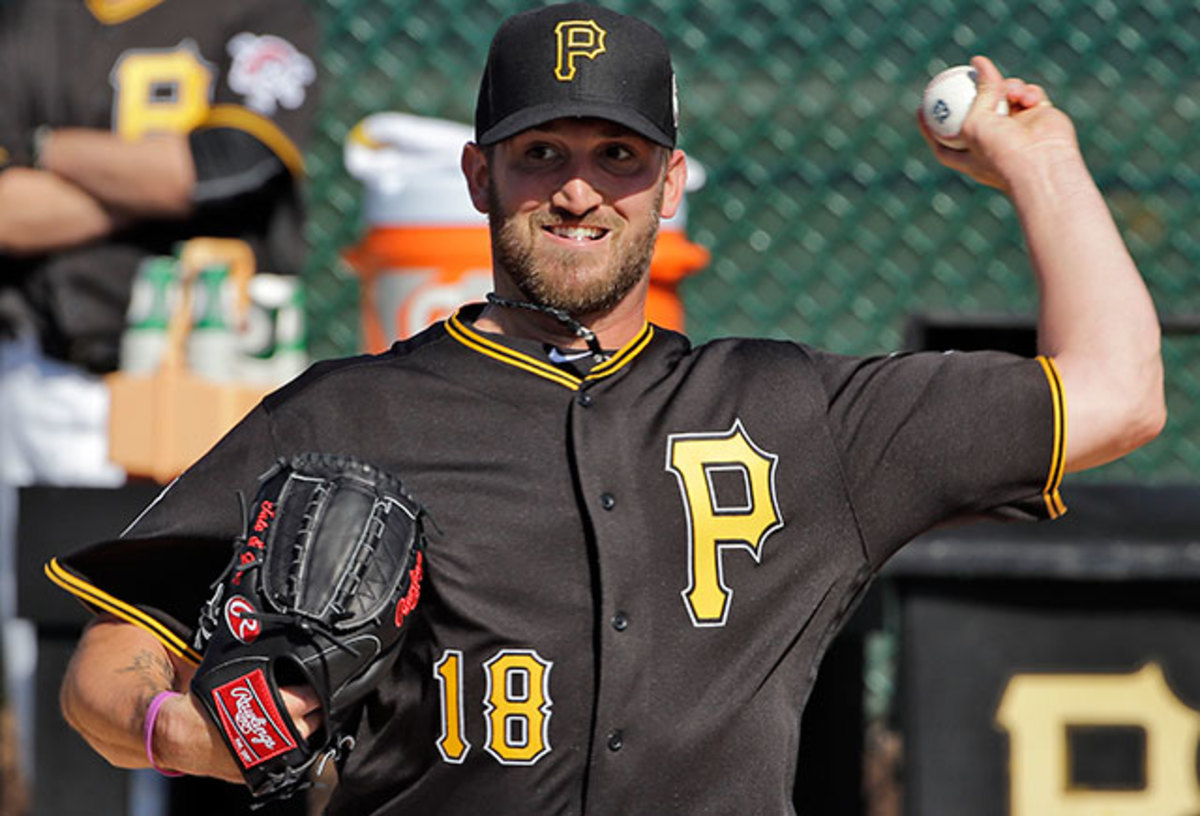
The Big Change: The loss of pitching guru Jim Benedict
Pitching coach Ray Searage gets the bulk of the credit for the miracles the Pirates have pulled off in rejuvenating veteran pitchers in recent years, but Benedict deserves some love as well. Having previously worked with general manager Neal Huntington in Montreal (where Benedict was a minor-league pitching coordinator from 1994 to ’98) and Cleveland (overlapping in Huntington’s final season there in 2007), Benedict was hired as a special assistant in late '08, preceding Searage in the organization, and has served as the organization’s pitching guru ever since. The Benedict and Searage partnership salvaged the careers of Francisco Liriano, A.J. Burnett, Edinson Volquez, Mark Melancon and J.A. Happ, among others, converting Huntington’s buy-low acquisitions into valuable contributors to a trio of playoff teams. Benedict has also been credited with playing a key role in the development of 2011’s No. 1 pick, Gerrit Cole, who emerged as the Pirates’ ace last year.
Last October, however, Benedict was hired away by the Marlins, who named him their vice president in charge of pitching development with the promise to consult him on all pitching acquisitions, from the draft to the major leagues. With the Pirates once again hoping to build the back end of a playoff rotation out of other team’s leftovers (see the off-season acquisitions of Jonathon Niese and Ryan Vogelsong) and another heralded prospect in need of some refining (see below), Benedict could be sorely missed.
The Big Question: Will the revamped infield come together?
As the first hitter ever to make the jump directly from the Korea Baseball Organization to the major leagues, shortstop Jung-ho Kang was a pleasant surprise for the Pirates last year. The 28-year-old hit .287/.355/.461, established himself as an everyday player on the left side of the infield and finished third in the NL Rookie of the Year voting. A takeout slide by the Cubs’ Chris Coghlan on Sept. 17, however, destroyed Kang’s left leg, tearing his medial collateral ligament and meniscus and fracturing his tibia; that injury ended his season and placed his return somewhere beyond Opening Day this year.
Spring is here! Nine key questions as camps open
Kang’s ability to return early in the season, and to return at full strength, will be crucial to the Pirates. The team intends to move third baseman Josh Harrison to second to replace keystone stalwart Neil Walker, who was traded to the Mets for Niese, with the hope that Kang can take over third base full time. With Walker gone and Kang out, however, Pittsburgh's infield is nothing but question marks. Harrison has never made more than 44 starts at second base in a single season at any professional level. Shortstop Jordy Mercer has shed more than 20 points of OPS+ in each of the last two seasons, bottoming out at 70 last year. At first base, the Pirates ditched former top pick Pedro Alvarez and are handing the reins to former catcher John Jaso, who hasn’t started a game at the position since 2005 and has played just 18 games there in his entire professional career.
The Big Prospect:Tyler Glasnow, SP
A fifth-round pick out of a Los Angeles-area high school, Glasnow has developed into one of the best pitching prospects in baseball (BA: 14; BP: 11; MLB: 10), dominating at nearly every level and putting up a 2.07 ERA with 11.8 strikeouts per nine innings over parts of four professional seasons. The scrawny, 6’8” righty can hit triple digits with his fastball and has a put-away curveball, but as is typical of pitchers that tall, he struggles with his control and gives up a lot of fly balls. Home runs have not been an issue for Glasnow in the minors, however, and his 3.5 walks per nine innings last year were a career low, allowing him to push his strikeout-to-walk ratio above 3.00 for the first time.
Glasnow reached Triple A last August and put up a 2.20 ERA in eight starts despite a sharp increase in walks. If he can get those free passes under control early in his repeat of Triple A this year (a task that may have been easier with Benedict still in the fold), he could be in the major league rotation by mid-year.
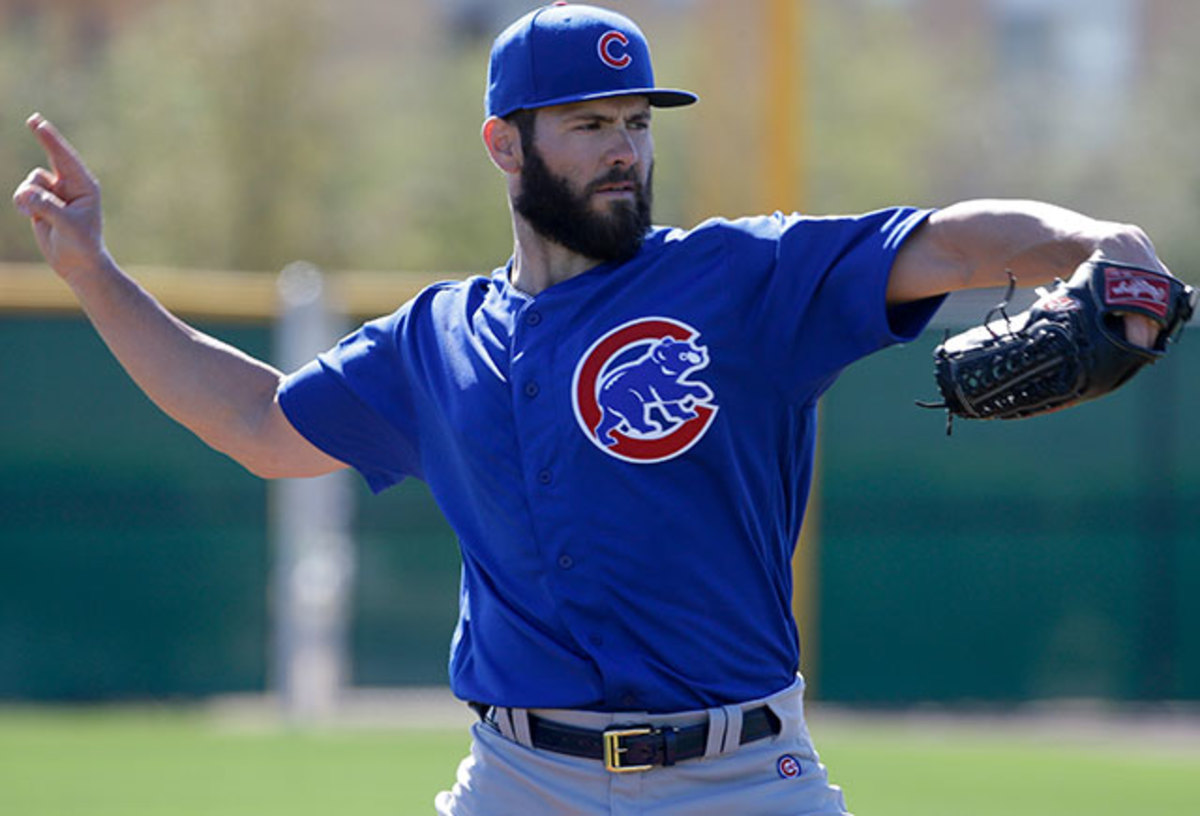
The Big Change:Going for it
I picked the Cubs to win a wild-card berth last year, but that felt like a stretch at the time. No one, myself included, thought they’d win 97 games—a 24-win improvement over the previous season. Impressive as that was, the Cubs’ return to contention wasn’t so much unexpected as it was ahead of schedule. The organization’s emerging young talent had long been in evidence, and the free-agent signing of veteran ace Jon Lester last off-season spoke to Chicago's expectations of near-future contention.
After last season, however, it’s clear just how good this team can be. Having supplemented last year’s core by spending a combined $272 million on free-agent additions Heyward, second baseman Ben Zobrist and veteran starter John Lackey, the Cubs have arrived in camp as the best team in baseball. For the first time this decade, the Cubs have legitimate World Series aspirations heading into the regular season, and while the North Siders haven’t won a pennant since 1945, anything short of an appearance in this year's Fall Classic would be a disappointment.
The Big Question: Where can the team best hide Kyle Schwarber’s glove?
Schwarber is a monster at the plate: As a 22-year-old rookie in his first full season after being drafted with the No. 4 pick out of Indiana University in 2014, he hit .255/.362/.529 with 21 home runs in 304 major league plate appearances between the regular season and playoffs. Unfortunately, Schwarber’s skills as a catcher weren’t nearly as advanced, prompting the Cubs to stash him in leftfield for the last two months of the year and the postseason. But Schwarber isn’t major league ready in the outfield, either: He played 36 games there in 2014 but didn’t play the position at all last year until the Cubs put him there in the second half of the season.
Greetings from Cub Med: Spring life with the World Series favorites
Standing a stocky six feet and 235 pounds, Schwarber plays the outfield like the lead-footed catcher that he is, but without the designated hitter and with All-Star Anthony Rizzo at first base, the Cubs have no other alternatives; in order to keep his bat in the lineup, the team will have to play Schwarber at catcher or in an outfield corner. The current plan appears to be to toggle him between leftfield and catcher, hoping that he’ll improve at one or both and find a permanent home in subsequent seasons. That’s a plan that fits well with Zobrist’s flexibility and the desire to get at-bats for Javier Baez in the infield, but it won’t prevent the Cubs from being significantly below average at whatever position Schwarber plays, at least early in the season.
The Big Prospect:Willson Contreras, C
Complicating the long-term defensive planning for Schwarber is the presence of Contreras, a Venezuela native whom the Cubs signed as third baseman in 2009 and converted to catcher in '13, a year before drafting Schwarber. Contreras (BA: 67; BP: 57; MLB: 50) will turn 24 in May, making him older than Schwarber, Baez and shortstop Addison Russell and just a few months younger than third baseman Kris Bryant, but he had a big year at the plate in his Double A debut last year (.333/.413/.478). And while Contreras is also a bat-first catcher, he seems more likely than Schwarber to stick at the position. The question is whether Contreras can repeat his impressive 2015 performance and push Schwarber off of catcher for good, or if his bat will regress and put him on a path as Schwarber’s backup in future seasons.
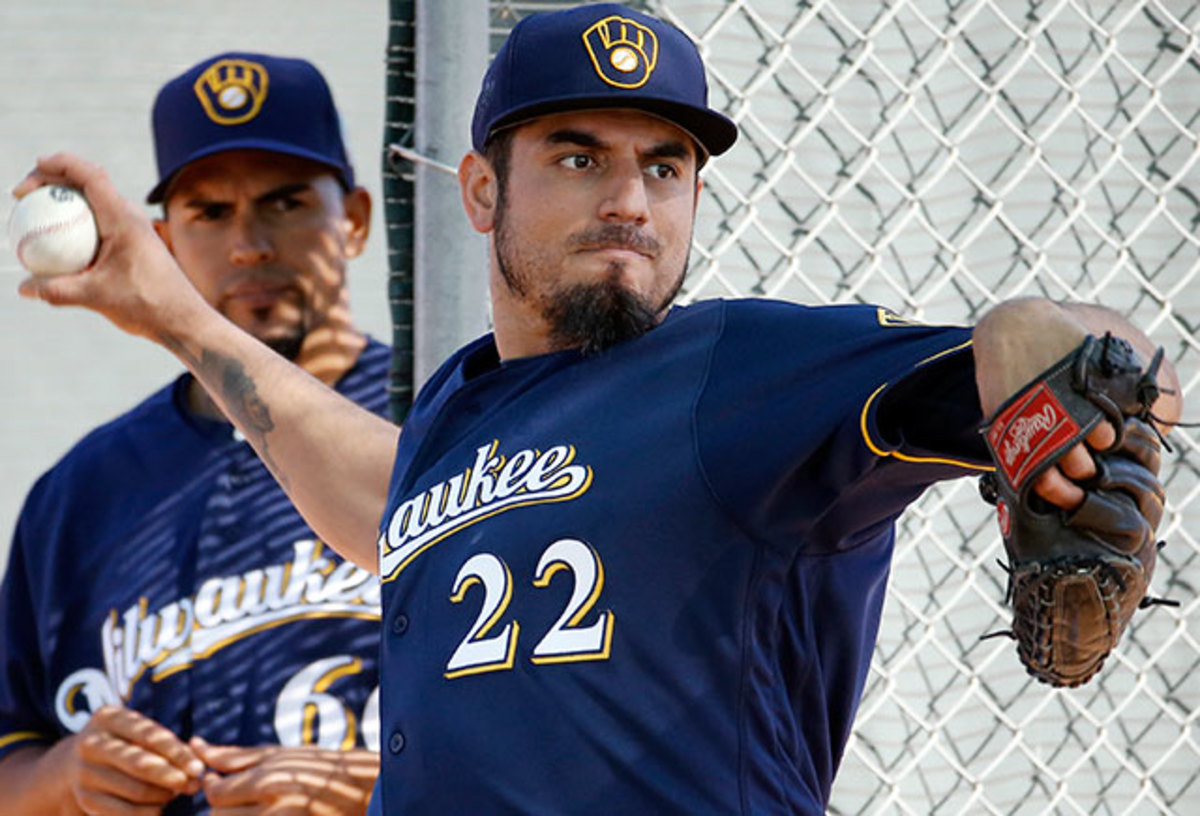
The Big Change: The degree of change
The Brewers arrive in camp this year with just 11 players remaining from last year’s Opening Day roster, including just three from last year’s Opening Day lineup. They also have a new general manager in David Stearns, a relatively new manager (Craig Counsell was hired last May, making this his first spring training as a skipper) and a new outlook: a multi-year rebuild.
It might be easier to point out what hasn’t changed for the Brewers from a year ago, but with leftfielder Ryan Braun coming off October back surgery and expected to be behind the rest of the team in camp, and with catcher Jonathan Lucroy as the subject of constant trade speculation, even the things that have stayed the same can’t be counted on to remain so by April. As a result, expectations for the coming season are minimal, but having so many unknowns could make spring training more compelling than usual for the Brewers.
The Big Question: What will this team look like on Opening Day?
Assuming Braun is ready in time, he’ll start in left. Lucroy will catch, Domingo Santana will play rightfield, and Chris Carter, who was signed this winter after being non-tendered by the Astros, will likely start at first base. Everything else, including Opening Day's starter and closer, is up for grabs this spring.
Year After Effect: Five pitchers at injury risk
Scooter Gennett and Jonathan Villar have the inside track on the shortstop and second base jobs, respectively, which would push Aaron Hill to third, but none of those three is a guarantee to keep his starting job in camp. Lefty Will Smith and righty Jeremy Jeffress will both get a chance to win the closer job in camp. Things are especially shaky in a rotation that lacks any sense of hierarchy, as Matt Garza, the lone veteran on the staff, had a disastrous 2015 season that ended with his refusal to move to the bullpen down the stretch (Garza claims he and the team are on good terms coming into camp).
Counsell and his staff have their work cut out for them this spring in sifting through the detritus of Stearns's rebuilding. The good news is that there is significant talent bubbling below the surface as a result of those moves.
The Big Prospect: Orlando Arcia, SS
Leading the charge of young talent in the Brewers’ system is Arcia (BA: 8; BP: 12; MLB: 6), one of a cluster of elite NL shortstop prospects that includes the Cubs’ Russell, the Dodgers’ Corey Seager, the Nationals’ Trea Turner, the Phillies’ J.P Crawford and the Braves’ Dansby Swanson. Of that quartet, only Crawford is younger than the 21-year-old Arcia, who could reach the majors this year now that the Brewers have officially moved on from former All-Star Jean Segura after trading him to the Diamondbacks last month.
Arcia hit .307/.347/.453 in his Double A debut last year with 25 stolen bases, 37 doubles and seven triples, showing a nice uptick in power in his age-20 season. He’s an outstanding fielder with a great arm, good speed and a good base level of competence at the plate. If he can continue to add power—though at 165 pounds, he’s unlikely to ever reach 20 home runs in a season, even at Miller Park—he should fulfill his All-Star potential, though he’ll have plenty of competition for that NL shortstop spot in the coming years.
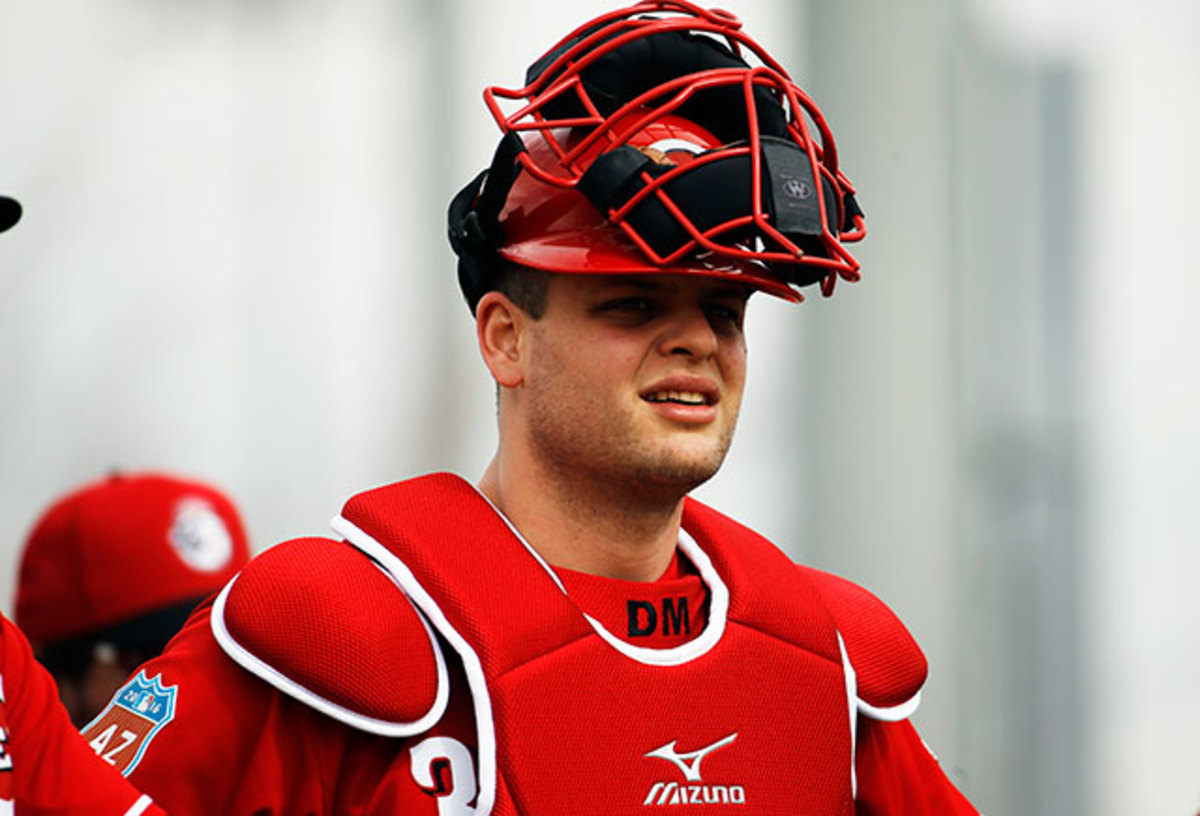
The Big Change: The closer
The Reds traded a pair of All-Stars over the off-season, sending third baseman Todd Frazier to the White Sox for a trio of prospects and closer Aroldis Chapman to the Yankees for a quartet of non-prospects. Frazier was the more valuable player because of his overall contributions and constant presence on the field, but Chapman was arguably the bigger star, having made four straight All-Star teams and ranking as the game’s best closer and the most dominant strikeout artist in major league history. By that same token, while Frazier will be missed more in terms of wins and losses, Chapman’s absence will be more striking to the fan in the stands.
To take over for Frazier at third base, the Reds will likely call on 24-year-old Eugenio Suarez, who slugged .446 with 13 home runs in 97 games last year. But when save situations arrive, Cincinnati will turn to 28-year-old J.J. Hoover, whose strikeout rate last year (7.3 per nine) was less than half of Chapman’s. Over the last two years combined, Hoover has walked 62 men and allowed 20 home runs in 127 innings, posting a 4.72 FIP. Over the same period, Chapman allowed just four home runs in 120 1/3 innings with a 1.47 FIP.
The Big Question: How will Devin Mesoraco’s hip hold up once games start?
One way the Reds can compensate for the loss of Frazier is to get Mesoraco’s bat back in the lineup. The burly catcher started just five games behind the plate last year due to an impingement in his left hip that was surgically corrected in late June, and while it may not benefit Cincinnati for us to know how his recovery has gone, one clue is that the Reds intend to take it easy on Mesoraco this spring. He is on schedule with the other catchers as camp begins, but, manager Byran Price said, the team will likely slow his pace as the games begin, putting Mesoraco slightly behind schedule.
Strike Zone podcast: Spring training preview, storylines to watch
The implication there is that, while he’s not expected to miss Opening Day, Mesoraco may open the season in a part-time role until the team is comfortable having him start multiple games in a row. Given his breakout performance in 2014 (.273/.359/.534 with 25 home runs in 114 games) and the fact that he is under contract through '18 (his age-30 season), Mesoraco is too valuable to rush just to play a few extra early-season games for a team in the middle of a rebuild. The challenge for the Reds is getting his pace just right to avoid a setback.
The Big Prospect: Robert Stephenson, SP
Drafted with the No. 27 pick out of a Bay Area high school in 2011, Stephenson ranked as high as 19th on Baseball America’s top-100 prospects list before the 2014 season, but he has seen his stock drop slightly (BA: 32; BP: 30; MLB: 35) over the last two years. That’s due in large part to control problems that accompanied his arrival in the high minors and the loss of a couple of miles per hour off his high-90s fastball. It seems likely that mechanical flaws are to blame for both shortcomings (Baseball Prospectus’ Christopher Crawford mentioned a collapsing back leg in his writeup of Stephenson as the Reds’ top prospect last month), though it’s troubling that the team has thus far failed to correct it.
Further struggles could push Stephenson to the bullpen, where he’d have closer potential. But given that he’ll turn just 23 on Wednesday, there’s still hope that he will emerge as a front-of-the-rotation starter in the coming years.
